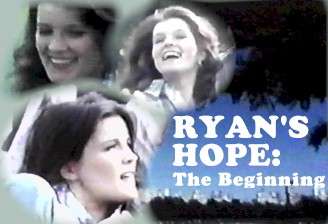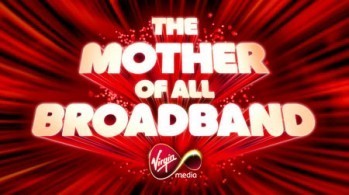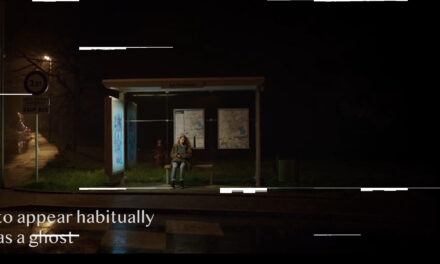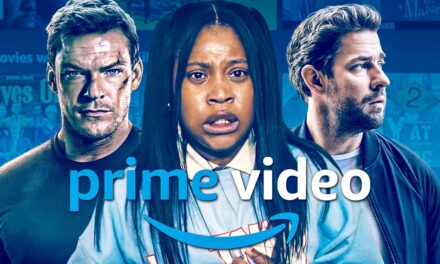Lorna Jowett’s recent blog for CST on ‘Children, Television, Nostalgia and Audiences’ helped me think through some questions I’d had around my own enjoyment of a contemporary children’s show: Girl Meets World (2014 -). Girl Meets World has caught my attention for numerous reasons, but mostly because, as a child-free viewer in her late twenties, it places me in an odd position; on one level, I am sure I am not the target audience, and yet, in another way, I quite obviously am.
Girl Meets World is a sequel series, a reboot of sorts, of 1990s teenage sitcom Boy Meets World (1993 – 2000). The original show’s lead characters, Cory Matthews (Ben Savage) and his sweetheart Topanga (Danielle Fishel), are now married and have children of their own, including 12-year-old Riley (Rowan Blanchard), the ‘Girl’ of the title.
It is nothing new, of course, to claim that children’s television often has a dual address to adults. Usually this is presumed to be to parents and carers, attempting to offer additional pleasures for those viewers who have no choice but to watch alongside the youngsters in their charge. And, indeed, much of the press and publicity around the series has emphasised this as a central draw of Girl Meets World. Jason Hughes proclaimed in the Huffington Post that ‘this may be the first Disney Channel original series that has as many parents excited about it as it does kids.’
This seems like an obvious and canny marketing strategy: resurrect a fondly remembered youth-oriented text for a new audience. However, in the case of Girl Meets World, I’ve not quite been able to make the maths add up on this one. Working on the assumption that most of those who watched Boy Meets World during its original run between 1993 and 2000 were born in the mid-1980s, they’ll just be turning 30 now. Even given the slightly lower average age of first childbirth in the US (25.8 years compared to around 29.8 years in the UK), it is unlikely that a large percentage have children of an age to watch Riley and her adventures (7 to 14-year-olds are the Disney Channel’s target audience). In short, if this reboot were a text aimed to get parents who were fans of the show and their children watching together, it’s come along about five years too early.
However, it is clear from my own enjoyment of the text, and from the careful revival of the characters, themes and tone of Boy Meets World, that the series is addressing those old fans. So what nostalgic pleasures does it offer? And why are they successful in attracting and holding the attention of those who don’t even have the convenient excuse of a ten-year-old daughter?
Boy Meets World itself, here in the UK at least, aired to one of the first generations of adolescents to grow up with satellite television. In theory, the conversations that we have in the pub about our childhood viewing should be more diverse, less homogenous – and less socially binding. We should have watched more, remembered less, and recollect differently. And yet, since I mentioned on Twitter my ‘guilty pleasure’ viewing of Girl Meets World, I have been approached by several colleagues and friends, all childless, who have been similarly gripped by this series that they too recognise as being for them, but not.
It’s worth highlighting here of course that Boy Meets World itself was never solely a children’s show. It typically aired in a tea-time slot on the Disney Channel (leading to endless wrangles in my house as my parents tried to claim the television set back for evening time, ‘their’ time). In the US, where it was broadcast at 8:30pm as part of ABC’s primetime TGIF line-up, this ‘family’ address was more pronounced. This is where the importance of paying attention to nationally specific conditions and cultures of viewing even in an era of global television is highlighted, particularly when we are thinking about nostalgia. Even though a children’s television programme might take all those who remember it ‘home’ again, that ‘home’ will be different according to the context in which we first encountered it.
In thinking about my enjoyment of Girl Meets World, I am drawn to comparisons with a perhaps unlikely partner text: Doctor Who (1963 – 1989, 2005 -). In the first episode of Girl Meets World, Cory’s mentor and teacher, Mr. Feeny (William Daniels), appears as a vision in front of a 90s-style subway poster that proclaims ‘it’s cool to stay in school’, congratulating his former student who is now a teacher himself. It’s a gesture obviously designed to excite those who fondly remember learning their own life lessons from Mr. Feeny. Doctor Who’s reboot speaks to a similar pleasure; viewers of the classic series are invited to spot and enjoy references to past doctors, technology or monsters, such as when the face of William Hartnell’s First Doctor pops up on an identification screen in ‘Vincent and the Doctor’. Even the mise-en-scène is strikingly similar here as we see the present look into the past, both spectres framed as if to recall, but not directly replicate, a television set:

‘Vincent and the Doctor’, Doctor Who 5:10 (2010)

‘Girl Meets World’, Girl Meets World 1:1 (2014)
Girl Meets World also has its own mode of regeneration: through the nuclear family. As in the original text, the central young protagonist has a best friend with an unstable family background – absent parents, financial hardship – in contrast with the heteronormative, middle-class security of the Matthews’ home. Like others before me, I feel it is useful here to return to the meanings of the term ‘nostalgia’ (as Amy Holdsworth does in her book Television, Memory and Nostalgia). A reminder that to speak of nostalgia is to speak specifically of a desire to return home seems particularly apt for considerations of both family television and the sitcom format.
The original Boy Meets World was itself nostalgic; its bubble of suburbia and positive adult and teen role models provided insulation from the problems and realities of growing up. Girl Meets World pretends that it is not nostalgic in many aspects: it embraces technological advances (the smartphone features heavily); it places the postfeminist, postmodern ‘tween’ at its centre; it moves us into inner-city Manhattan. And yet, while star Ben Savage sought to emphasise that the show is ‘written and conceived for a whole new generation of kids’, it still centres around the expression of family values, tales of morality, and the articulation of home and school as safe places that we want to return to again and again. It is not just the reminder of Feeny’s lessons, or Topanga’s musing about ‘how many people the idea of Cory and Topanga has ruined’ that reinforce this pattern of remembering and returning. We have moved from the suburbs to an urban New York apartment, but we may as well not have, with almost all the post-pilot action taking place within the safe confines of either the family home or the classroom (in a school called John Adams Middle School, just like in the original series). Even Cory’s profession as history teacher writes this pre-occupation with the past into the ‘now’ of the show.
Prior to the reboot of Doctor Who, writer and now show-runner Steven Moffatt was quoted as saying that ‘if 10 year olds aren’t talking about the show in the playground on Monday morning then we’ll have failed’. And, despite its commitment to nostalgia Girl Meets World too has no hesitation in positioning itself as being aimed at children before adults. It belongs firmly within Disney’s output of ‘tween’ programming: a world of BFFs, texting, cute boys and life lessons. This is the part of the text that renders my own viewing most conspicuous; it is when these elements take the foreground that I feel most exposed in my consumption. This tension is particularly jarring when experienced alongside the ‘safe return’ of nostalgia that other elements of the show provide. I am lulled into a world of fond memories, then brought back to the present with a bump when there’s a misfired joke about homework, or a soft-focus shot of Riley’s ‘crush’ Lucas (Peyton Meyer).
I can easily see the rationale behind the decision to place a 7th grade girl at the centre of the narrative, rather than a boy as in the original. Firstly, it gives an obvious point of departure, highlighting the text’s ‘newness’, difference and independence from its (literal) ‘father’ show. Secondly, the 14 years that Boy Meets World has been off the screen has seen an explosion of discourses of girlhood as a commodity and a concern, and the Disney Channel has been a key site for the exploration and creation of this formulation of young femininity (as Melanie Kennedy noted her paper on Miley Cyrus at the ‘Acting Up: Gender and Television Comedy Symposium’ at Northumbria University). This ensures both an audience for the text (tween girls as consumers) and offers a range of anxieties and themes that might be explored (tween girls as problematic figures).
Girl Meets World appears to have been a successful property for Disney: eight extra episodes of the first season were ordered during production, and filming for a second series is now underway and due to air next year. What remains to be seen is whether nostalgia will continue to be invoked as a mode of viewership, and if so, whether the two modes of address can be more successfully assimilated. Or perhaps it is true what they say – you can never go home again, no matter how hard the programme tries to make you.





